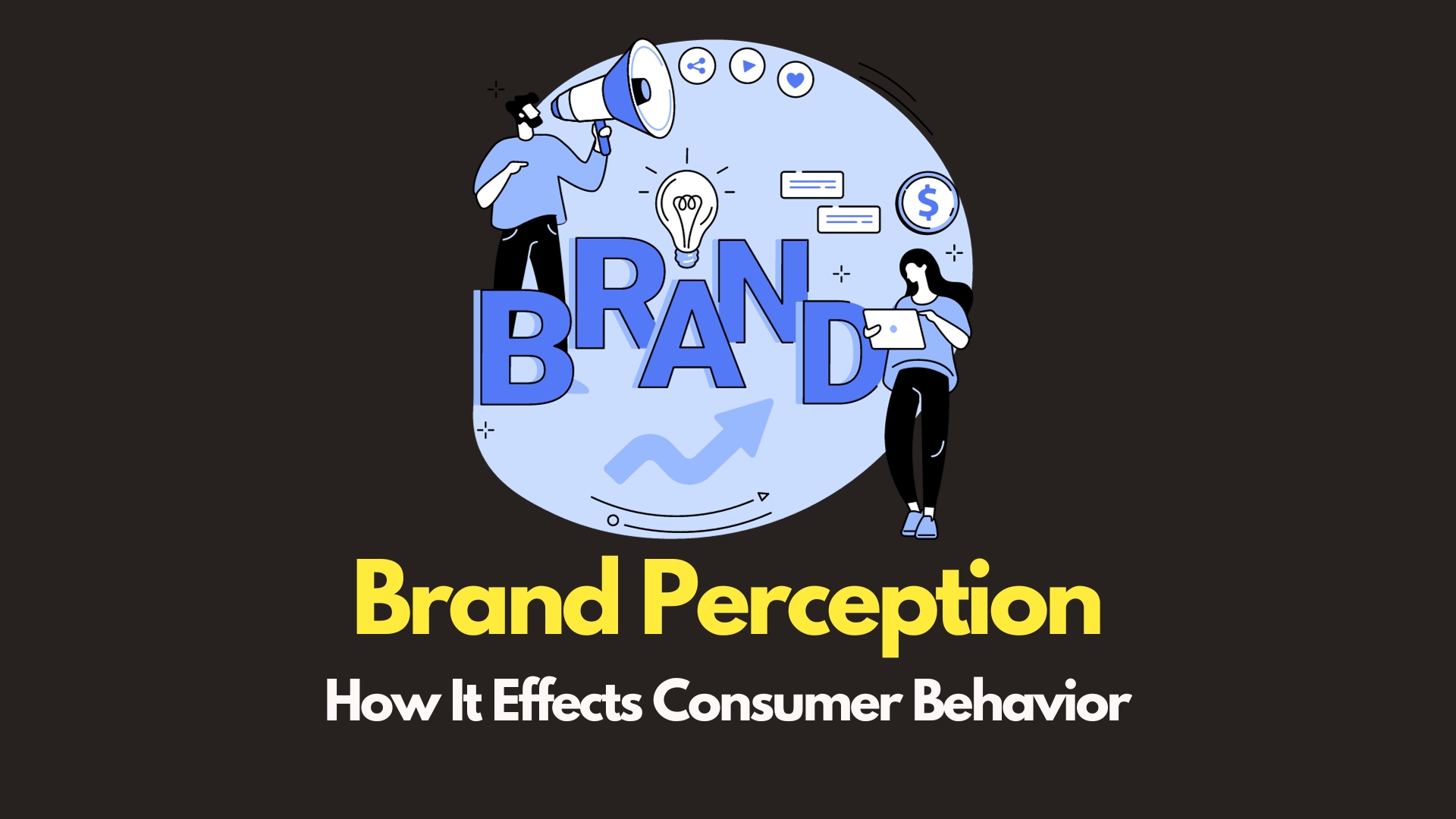Published
- 6 min read
Understanding Consumer Behavior and Brand Perception

| Key Takeaways |
|---|
| 1. Brand perception significantly influences consumer behavior. |
| 2. A positive brand image can lead to increased customer loyalty and sales. |
| 3. Businesses need to understand the psychological triggers that affect purchasing decisions. |
| 4. Online and offline shopping dynamics are shaped by brand reputation. |
| 5. Crafting a balanced marketing strategy is essential for leveraging consumer psychology. |
Introduction
In the ever-evolving landscape of business and consumerism, understanding the intricate relationship between Consumer Behavior and Brand Perception is crucial for any company aiming to thrive. This article delves into how brand image and reputation influence consumer choices, shaping the success or failure of businesses in today’s competitive market.
The Impact of Brand Perception on Consumer Behavior

Brand perception is the lens through which consumers view a company’s products or services. It’s a complex amalgamation of emotions, experiences, and beliefs that mold consumer behavior. When a brand is perceived positively, it can lead to increased trust, customer loyalty, and ultimately, sales. On the other hand, a negative brand perception can deter consumers, leading to a decline in market share.
Psychological Triggers and Brand Loyalty
The power of psychological triggers in advertising cannot be overstated. These triggers can be as subtle as color choice, which is why understanding the impact of color psychology in marketing is vital. A brand’s ability to connect emotionally with consumers can cement long-term loyalty, turning occasional buyers into brand ambassadors.
Online vs. Offline Shopping Dynamics
The digital age has transformed how we shop, and with it, how consumers interact with brands. Exploring consumer behavior in online vs. offline shopping dynamics reveals that while the convenience of online shopping is undeniable, the sensory experience of in-store shopping still holds significant sway over consumer choices, especially when a brand’s in-store experience aligns with its online persona.
Crafting a Balanced Marketing Strategy
To effectively influence consumer behavior, businesses must create a balanced marketing strategy, leveraging both the psychological aspects of consumer behavior and the practicalities of product availability and pricing. A well-crafted strategy will consider the role of emotions in purchasing decisions and the hidden psychology behind brand loyalty.
Wrap-up
The nexus between consumer behavior and brand perception is powerful and complex. Businesses that harness this relationship, understanding the psychological underpinnings of consumer choices, and crafting strategies that align with these insights, stand to gain a significant competitive edge. To deepen your understanding of these concepts, explore our business, marketing, and health and wellness categories for more insights into consumer behavior and the power of brand perception.
The Role of Age and Gender in Retail Purchasing

Understanding the nuances of consumer behavior extends beyond brand perception—it also involves recognizing the role of age and gender in retail purchasing. Different demographics have distinct preferences and shopping habits, which can be heavily influenced by a brand’s image. For instance, younger audiences might be drawn to brands that are perceived as innovative and socially responsible, while older consumers may value tradition and reliability.
The Influence of Cultural and Social Factors
Consumer behavior is not only shaped by individual preferences but also by broader cultural and social factors. The impact of cultural factors on consumer behavior highlights how societal norms and values play a pivotal role in how brands are perceived and, consequently, how products are consumed. Understanding these cultural nuances is essential for brands aiming to penetrate global markets or cater to diverse consumer bases.
Social Media’s Role in Shaping Brand Perception
In today’s digital era, social media platforms have become battlegrounds for brand perception. The impact of social media on teen shopping trends illustrates just how quickly a brand’s image can be bolstered or tarnished through online interactions. Brands that actively engage with consumers and manage their online reputation can significantly influence purchasing decisions and foster a sense of community.
Leveraging Consumer Psychology in Marketing
To effectively influence consumer behavior, it’s crucial to understand the underlying psychological factors that drive decision-making. Understanding consumer decision-making processes and the psychology of pricing to leverage consumer perceptions are key components of a strategic approach to marketing. Brands that can tap into the consumer psyche can create compelling narratives that resonate with their target audience.
Sustainability and Consumer Choices
In an age where environmental concerns are increasingly at the forefront, weaving sustainability into fashion’s future is not just an ethical choice but a strategic one. Brands that are perceived as environmentally friendly and socially conscious are gaining traction with consumers who prioritize sustainability in their purchasing decisions. This shift in consumer values is a clear indicator that brand perception must evolve with societal trends to maintain relevance.
Wrap-up
The interplay between consumer behavior and brand perception is a dance of psychological, cultural, and social elements. Brands that master the art of influencing perception, through understanding their audience and the factors that drive their behavior, will enjoy the fruits of consumer loyalty and business success. For further exploration into the science of consumer behavior and effective marketing strategies, visit our marketing category for a wealth of resources.
Unraveling the Secrets of Consumer Behavior Analysis

To truly understand consumer behavior and brand perception, businesses must engage in detailed consumer behavior analysis. This involves collecting and interpreting data on how consumers interact with brands across various touchpoints. By analyzing this data, companies can identify patterns and trends that reveal the strengths and weaknesses of their brand perception.
The Science Behind Brand Image
A brand’s image is not just shaped by marketing campaigns but also by the science behind how our brains perceive and process information. For instance, understanding how alpha waves can enhance study sessions can provide insights into how relaxed states of mind might make consumers more receptive to certain types of advertising.
Technology and Mindfulness in Consumer Behavior
In an age where technology is ubiquitous, the intersection of technology and mindfulness plays a significant role in consumer behavior. Brands that use technology to promote mindfulness, such as through apps or virtual experiences, can enhance brand perception by aligning with consumer desires for well-being and balance, as seen in the growing trend of using technology in mindfulness practice.
The Ultimate Guide to Crafting a Marketing Strategy
With insights from consumer behavior analysis, businesses can craft an ultimate guide to crafting a marketing strategy that resonates with their target audience. This guide would include practical examples and ready-to-use samples that address the various facets of consumer psychology, from the healing power of delta waves to the unlocking of peak mental performance through beta waves.
Brand Perception in Different Business Sectors
It’s also crucial to understand how brand perception varies across different business sectors. Learning from the 6 thriving and stumbling business sectors over the last 5 years can offer valuable lessons in how consumer behavior and brand perception have driven success or led to challenges.
Conclusion
The tapestry of consumer behavior and brand perception is woven with threads of psychology, technology, culture, and personal experience. Businesses that invest in understanding this complex fabric and use it to tailor their marketing strategies are more likely to capture the hearts and wallets of their consumers. For more insights into the fascinating world of consumer behavior, delve into our extensive resources in the business and marketing categories.